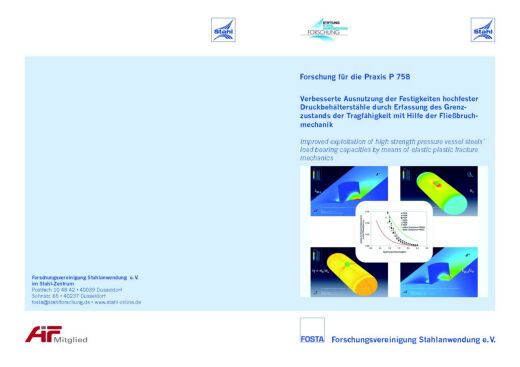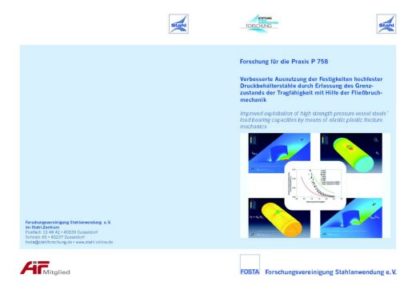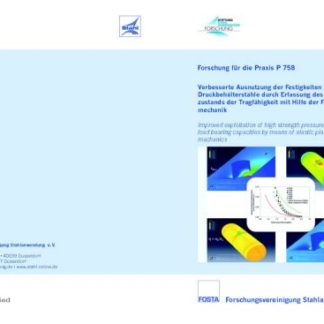Description
P 758 – Improved exploitation of high strength pressure vessel steels´ load bearing capacities by means of elastic plastic fracture mechanics
The project aimed to provide new, more realistic safety factors for the design of unfired pressure vessels made of high strength steels. Therefore a method was established which allows for reproducible determination of realistic safety factors based on the application of probabilistic safety concepts. Both plastic component instability and ductile crack initiation were considered as limit states.
Damage curves were used for limit state analysis of model pressure vessels. These curves give the equivalent plastic strain to ductile crack initiation as a function of the stress triaxiality. Using advanced concepts from materials mechanics, the scatter band of damage curves could be expressed for different steel grades. The determination of these upper and lower bound curves is based on the assumption of Charpy impact toughness properties at ambient temperature. The lower bound damage curve was computed using the toughness requirements defined in the steel delivery standard, whereas the upper bound damage curve relies on the assumption of the highest possible Charpy impact toughness value within a given steel grade. It could be shown that all damage curves measured for the project fall into the identified scatter bands. This holds especially for the welded materials.
For the determination of improved safety factors, model pressure vessels were studied. Their failure behaviour was simulated using the identified damage curves. These investigations were carried out for typical details of unfired pressure vessels considering inner pressureeinseitias loading condition. Initially, the existing European rules were applied in terms of “Design by Formulae” as well as “Design by Analysis”. Afterwards, simulations were performed using the damage curves as failure criteria. For these simulations, precracks and similar imperfections were considered. Likewise, the “hot spots” of the model vessels could be identified as well as the critical operating conditions.
These were expressed as elastic limit pressure pe, burst pressure pmax und crack initiation pressure pi. Afterwards, these results were used as “virtual” experimental results for the determination of probabilistic safety factors according to the probabilistic safety concept of EN 1990, part D. The results obtained prove the current design rules being over-conservative since they do not properly reflect the realistic limit states of the vessels.
The research project was carried out at Institut für Eisenhüttenkunde and at Institut für Stahlbau und Lehrstuhl für Stahlbau und Leichtmetallbau of Rheinisch-Westfälisch Technischen Hochschule Aachen, such as at Ingenieurbüro für Werkstofftechnik, Aachen. FOSTA has accompanied the research work and has organized the project funding from the Foundation for Steel Application Research.
Only available in german language.
Authors:
W. Bleck, S. Münstermann, C. Schruff, M. Feldmann, D. Schäfer, P. Langenberg
Published in:
2014




